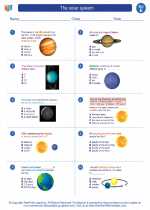Action Potential
An action potential is a brief electrical impulse that travels down the axon of a neuron. It is a key component of the nervous system and is responsible for transmitting signals within the brain and throughout the body.
Neuron Structure
Before understanding action potentials, it's important to know the structure of a neuron. A typical neuron consists of a cell body, dendrites, and an axon. The dendrites receive signals from other neurons, while the axon carries the signal to the next neuron.
Resting Potential
At rest, the inside of the neuron has a negative charge compared to the outside. This is due to the presence of more negatively charged ions inside the neuron, such as potassium ions, and more positively charged ions outside, such as sodium ions. This difference in charge is known as the resting potential.
Initiation of Action Potential
When a neuron receives a signal from another neuron, channels in the cell membrane open, allowing sodium ions to flow into the neuron. This causes a temporary reversal of the charge inside the neuron, known as depolarization.
Propagation of Action Potential
If the depolarization reaches a certain threshold, it triggers the opening of voltage-gated channels along the axon, allowing sodium ions to rush into the cell and causing a rapid depolarization of the membrane. This creates the action potential, which then travels down the length of the axon.
Repolarization and Hyperpolarization
After the action potential passes, the cell membrane repolarizes as potassium ions move out of the cell, restoring the negative charge inside the neuron. Sometimes, an overshoot of repolarization can occur, leading to hyperpolarization before the membrane returns to its resting potential.
Importance of Action Potential
Action potentials are essential for transmitting signals along the nervous system, allowing for communication between neurons and ultimately enabling various bodily functions and behaviors.
Study Guide
- Describe the structure of a neuron and the function of its different parts.
- Explain the concept of resting potential and the role of ion concentration in maintaining it.
- Detail the process of action potential initiation and propagation.
- Discuss the mechanisms of repolarization and hyperpolarization following an action potential.
- Elaborate on the significance of action potentials in the nervous system and human physiology.
◂Science Worksheets and Study Guides Fifth Grade. The solar system

 Worksheet/Answer key
Worksheet/Answer key
 Worksheet/Answer key
Worksheet/Answer key
 Worksheet/Answer key
Worksheet/Answer key
 Vocabulary/Answer key
Vocabulary/Answer key
 Vocabulary/Answer key
Vocabulary/Answer key
 Vocabulary/Answer key
Vocabulary/Answer key
